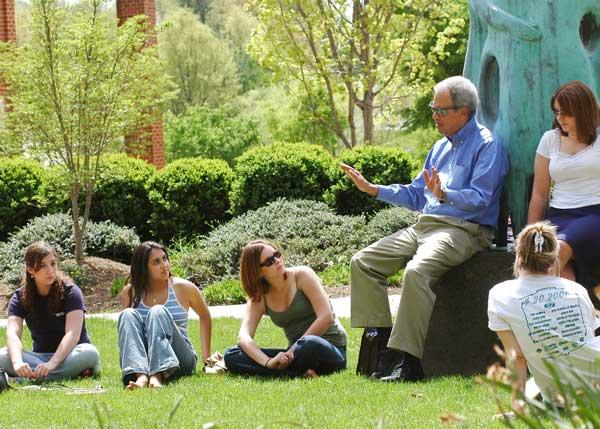About Our Projects
Digital reconnaissance challenges us not to just accept a lack of information but also to question why that lack exists.
—Jamila Moore Pewu, The Digital Black Atlantic

Every CML project exposes forgotten history as part of an active research agenda integrating teaching and new scholarship based on "digital reconnaissance." This work is furthered by our dedication to respectful community connections, forging collaborations among university-based researchers and local residents, historians, and collectors steeped in preserving hidden pasts.
We categorize our studies in four main areas:
Black Lives Next Door began as 2021 summer research into a Black community that stood on what is now campus land—referred to by University boosters at the time as "the Negro ... next door." Were they forced out? Did they resist? Where did they go? A group of undergraduate and graduate students and faculty applied digital and geospatial techniques to gleanings from courthouse, property, and university records and oral histories to find out. Their work seeded a slew of inquiries, continuing today, for a growing collection of online exhibits unpacking local slavery's modern afterlives.
Black Lives Next Door: Geographies of Inequity
Dictionary of Fairfax Biography
Black Lives Next Door in Loudoun County [to come]
CML's community projects harness digital platforms and online interpretation to give the public more access to knowledge traditionally walled off in archives and academic settings. Our respectful community approach stresses learning from Black communities to learn about them, supplementing scholarly analyses and archival documents with local history-keepers' sharing of photographs, documents and artifacts and family stories long cherished in private hands. Digital methods and platforms let us welcome lay practitioners into the research process and amplify their voices, broadening the community of contributors beyond "canonical" boundaries.
Spatializing Black Stories: Geographies of Community in Loudoun County, Virginia
Northern Virginia Archive of Black Community Resistance
Black Lives Next Door In Fairfax
Black Lives Next Door - Geographies of Inequity: Graduate Student Projects · Undergraduate Student Projects
From 25% in 1900 to 3% in 1970—as suburbanization transformed our region, where did its Black population go? Did Black residents willingly leave, or were they forced from their communities by regional growth? What unseen roles did campus exclusion and expansion play, we ask, and whose voices will be heard?"
George Mason University History Trail
Black Lives Next Door: George Mason & Northern Virginia
Racial Reckoning (Digital artifacts of 2020 mass protests collected by the George Mason University community.)
The Benches at Mason (A collaboration with the Office of University Life to document the tradition of bench-painting by student organizations around campus.)
Robert A. Rutland's authoritative 1970 Papers of George Mason, filling three volumes, contains no references to Mason's slaveholding or the bonded individuals who made his comfort possible. Our ongoing digital project revisits those same papers and others from repositories across the region to more fully understand the roles of George Mason IV, his businesses, and his kin in molding slavery's lasting legacies.
Mason Family Papers: the Digital Edition (all)
- Papers of George Mason, 1725-1792
- Fairfax Circuit Court Slavery Index
- Interpretive Exhibits: The Doeg and the Early Mason Family... ⋅ “Not Satisfied with the Provisions Made for Her”: Elizabeth... ⋅ Enslaver, Investor, and Failed Progenitor: Richard...
- Undergraduate Exhibits: Children of the Confederacy: Colonel John S. Mosby Chapter ⋅ Kate Mason Rowland: Bias and Historical Contributions ⋅ Policing Morality in Reconstruction-Era Northern Virginia ⋅ Fairfax County Library, Virginia, and Censorship
The ongoing Mason Account Book project, plumbing documents held by University Libraries, reveals as much about archival research as it does about its writers, a nephew and grand-nephew of George Mason IV. Their pedestrian log of transactions, from pork purchases to land sales, reveals patterns and profiles that amplify our nation's story. Working with CML professors, students in 2020 undertook the first digital transcriptions and annotations of its pages, with special attention to what they reveal about the Masons' profitable roles—rarely studied or remarked on—in the trade and enslavement of people from West Africa and their descendants.
Nine student-led exhibits find new evidence about untold lives in Mason's orbit, drawing evidence from archives as well as the physical spaces of Mason's Gunston Hall. This research offered an early expression of CML methods and ideas and led to creation of the Enslaved People of George Mason Memorial. See their work here:
Enslaved Children of George Mason
For more on the Memorial:
Watch: CML's Wendi Manuel-Scott explains how the memorial complicates George Mason "through the eyes of Penny," the silhouette of a once forgotten child.
Read: "Our namesake holds a complicated legacy" a student wrote in a 2019 article about the planned memorial for Fourth Estate, the campus news outlet.

CML aims to democratize knowledge and improve collective understanding of racism and its effects. We draw inspiration from the ideas of Roger Wilkins, an esteemed U.S. Justice Department official, a Pulitzer Prize-winning reporter who covered the effects of race and poverty, the author of Jefferson's Pillow and, from 1986 to 2007, Robinson Professor of History and American Culture at our university. The school recognized his impact by naming a central campus plaza for him—also, appropriately, the site of CML's Memorial to the Enslaved Children of George Mason.
Digital scholarship weaves indelibly through CML’s mission and methods. Our students gain fluency in digital humanities as both a research method and a medium for publication, allowing them to reach broad audiences with scholarship that might otherwise lie behind paywalls or in closed archives. The projects featured here demonstrate the breadth of CML's scholarship and digitized collections, both those we create and those we are privileged to disseminate.
Most of our exhibits are built on the open-source content management system Omeka S, frequently incorporating other digital tools including ArcGIS mapping software and, from Knight Labs, StoryMapJS and TimelineJS. Earlier CML projects used Omeka Classic and Drupal.